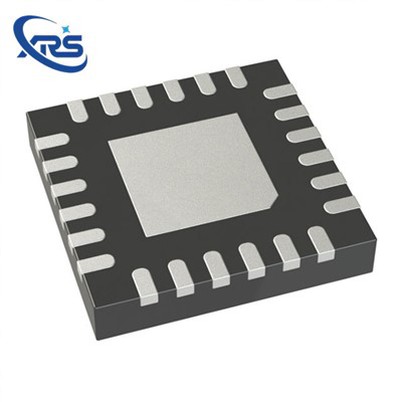How do sensor magnets affect the temperature coefficient of sensors?
Leave a message
Hey there! As a supplier of sensor magnets, I've seen firsthand how these little guys can have a big impact on sensor performance. One of the key factors that can affect a sensor's accuracy and reliability is the temperature coefficient. So, let's dive into how sensor magnets play a role in all of this.
First off, let's talk about what the temperature coefficient is. In simple terms, it's a measure of how much a sensor's output changes with temperature. Every sensor has a certain degree of sensitivity to temperature variations, and this can cause fluctuations in the readings. For example, if you're using a sensor to measure the speed of a rotating object, a change in temperature could make the sensor report a slightly different speed than the actual one.
Now, where do sensor magnets come in? Well, sensor magnets are an integral part of many types of sensors. They work by interacting with the magnetic field around them, and this interaction is what allows the sensor to detect changes and convert them into electrical signals. Different types of sensors use sensor magnets in different ways. For instance, Magnetic Switch Sensor Circuit rely on the magnetic field to open or close a circuit, while Linear Hall Effect Sensors measure the strength of the magnetic field to determine a physical quantity like position or speed.


One of the main ways sensor magnets affect the temperature coefficient is through their magnetic properties. The magnetic field strength of a magnet can change with temperature. Most magnets tend to lose some of their magnetic strength as the temperature rises. This is known as thermal demagnetization. When the magnetic field strength of the sensor magnet changes, it directly impacts the sensor's output. If the magnet's field weakens due to a temperature increase, the sensor might detect a lower magnetic field than it should, leading to inaccurate readings.
Let's take the example of a Linear Hall Effect Sensor. These sensors are very sensitive to the magnetic field strength. If the sensor magnet's field strength decreases with rising temperature, the Hall effect sensor will register a lower magnetic field, and this will be reflected in its output voltage. This change in output voltage can cause errors in the measurement, especially if the application requires high precision.
Another aspect to consider is the material of the sensor magnet. Different magnetic materials have different temperature coefficients themselves. For example, neodymium magnets are very strong but have a relatively high temperature coefficient. This means that their magnetic properties can change significantly with temperature. On the other hand, samarium - cobalt magnets have a lower temperature coefficient, making them more stable in a wide range of temperatures. So, when selecting a sensor magnet for a particular application, the material's temperature characteristics are crucial.
In some cases, the design of the sensor and the way the magnet is integrated can also affect the temperature coefficient. If the magnet is not properly insulated or if it's in close proximity to heat - generating components, it will be more susceptible to temperature changes. For example, in a Magnetic Switch Sensor Circuit, if the magnet is placed too close to a power - hungry transistor, the heat from the transistor can cause the magnet's properties to change, leading to unreliable switching behavior.
Let's also touch on a specific sensor, the ACS723LLCTR. This is a current sensor that uses a magnetic field to measure current. The sensor magnet in this case is essential for accurate current measurement. Any change in the magnet's magnetic field due to temperature can lead to errors in the current reading. If the temperature coefficient of the sensor magnet is not well - controlled, the accuracy of the ACS723LLCTR can be severely compromised, especially in applications where precise current monitoring is required, like in battery management systems or power electronics.
To mitigate the effects of the temperature coefficient on sensors, several strategies can be employed. One common approach is to use temperature compensation techniques. This involves adding additional components or circuits to the sensor system that can adjust the output based on the temperature. For example, a thermistor can be used to measure the temperature, and the sensor's output can be corrected accordingly.
Another option is to select sensor magnets with a low temperature coefficient. As mentioned earlier, samarium - cobalt magnets are a good choice for applications where temperature stability is critical. By using these magnets, the sensor's performance can be more consistent over a wide temperature range.
We, as a sensor magnet supplier, understand the importance of providing high - quality magnets with well - controlled temperature coefficients. We offer a wide range of sensor magnets made from different materials, including neodymium, samarium - cobalt, and ferrite. Our magnets are carefully tested to ensure their magnetic properties remain stable under various temperature conditions.
If you're in the market for sensor magnets and want to ensure that your sensors have accurate and reliable performance over a wide temperature range, we're here to help. Whether you're working on a Magnetic Switch Sensor Circuit, a Linear Hall Effect Sensor, or using a specific sensor like the ACS723LLCTR, we can provide you with the right magnets for your application.
Don't hesitate to reach out to us for more information or to discuss your specific requirements. We're always happy to have a chat and find the best sensor magnet solutions for you.
References
- "Magnetic Sensors and Their Applications" by some well - known authors in the field of magnetism.
- Technical datasheets of sensor magnets and related sensors from various manufacturers.






